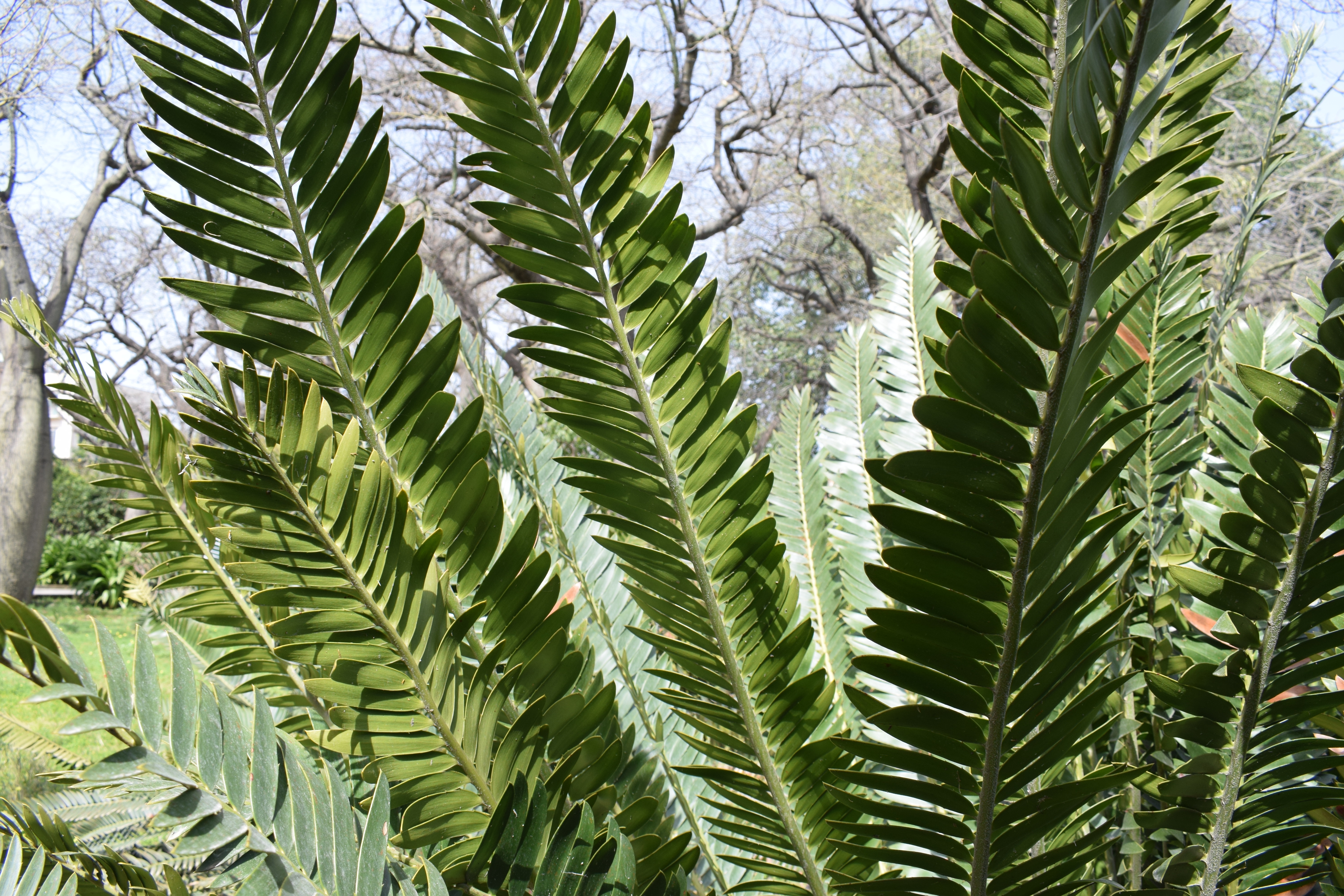Encephalartos msinganus
(Encephalartos msinganus)

Description
Encephalartos msinganus is a species of cycad from Kwazulu-Natal. It is an arborescent plant, with a stem up to 3 m tall and with a diameter of 35 cm. The leaves are 110-150 cm long, light green in color, stiff and rather keeled. The spine is green, straight or slightly curved. The non-overlapping lanceolate leaflets, 14–17 cm long, are arranged on the rachis in the opposite way, with an insertion angle of about 60º; the margins are full and smooth and the apex thins to become a robust spine. The leaves of the basal part are smaller and are often reduced to spines. It is a dioecious species, with ovoid-shaped male cones, pale yellow, 30–40 cm long and 11–12 cm broad. On each plant they grow up to four at a time. The female cones, about the same shape, are 42 cm long, have a diameter of 22 cm, and can be covered with a thin brown hair. Usually each plant produces one or two. The seeds have an oblong shape and are covered by a red sarcotesta. Encephalartos is a genus of cycad native to Africa. Several species of Encephalartos are commonly referred to as bread trees,bread palms or kaffir bread,since a bread-like starchy food can be prepared from the centre of the stem. The genus name is derived from the Greek words en (within), kephalē (head), and artos (bread), referring to the use of the pith to make food. They are, in evolutionary terms, some of the most primitive living gymnosperms. All the species are endangered, some critically, due to their exploitation by collectors and traditional medicine gatherers. The whole genus is listed under CITES Appendix I which prohibits international trade in specimens of these species except for certain non-commercial motives, such as scientific research. Several of the species possess stout trunks. In E. cycadifolius, the main trunks are up to 10 feet (3.0 m) high, and several of them may be united at a base where a former main trunk once grew. The persistent, pinnate leaves are arranged in a terminal spreading crown, or ascending. The rigid leaflets are variously spiny or incised along their margins. The leaflets have a number of parallel veins and no central vein. Male cones are elongated, and three or four may appear at a time. Female cones are borne singly, or up to three at a time, and may weigh up to 60 pounds (27 kg). In some species, male cones with ripe pollen emit a nauseating odour. When the pollen has been shed and the males cones decay, a strong odour of acetic acid has also been noted.
Taxonomic tree:







